"The lessons from the peace process are clear; whatever life throws at us, our individual responses will be all the stronger for working together and sharing the load".
When Queen Elizabeth expressed her "deep sympathy" for those who suffered during Britain’s turbulent relationship with Ireland, her words marked a watershed in Anglo-Irish relations that few would have thought possible 40 years ago.
Her speech at the State Dinner in Dublin Castle during her historic four-day visit to Ireland in 2011 both acknowledged "the weight of history" while recognising there was also "much to celebrate".
Having opened her speech in Irish, greeting "A Uachtaráin agus a chairde", she later added: "Of course, the relationship has not always been straightforward; nor has the record over the centuries been entirely benign.
"It is a sad and regrettable reality that through history our islands have experienced more than their fair share of heartache, turbulence and loss."
It is the heartache, turbulence and loss that previously would have made any notion of a State visit to Ireland by a British monarch or indeed a return visit by an Irish head of State to the UK an impossibility.
In the darkest days of The Troubles, peace and reconciliation were almost unimaginable concepts as peoples' lives were torn asunder through sectarian violence and a deep disbelief in many quarters that a political solution could ever be achieved.
From 1966 to 2006 the death toll from The Troubles stood at 3,720 with 2,087 of those civilians.
The worst year of the Troubles was 1972 when 496 people died.
Each death was an atrocity in its own right – families were torn apart and the impact of loss was felt across generations.
Ballymurphy and Bloody Sunday
1971 saw the introduction of interment without trial in Northern Ireland.
During a three-day period in August that year British soldiers moved into the Ballymurphy area of west Belfast, raiding homes and rounding up men.
Eleven civilians were killed, including a priest who braved sniper fire to give a dying man the last rites.
Another of the victims was a 45-year-old mother-of-eight who witnesses say lay dying in the street for hours after she was shot having gone to the aid of 19-year-old man who had been wounded when soldiers opened fire on a group of people who had gathered at the bottom of Springfield Park for a wake.
Witnesses reported that the wounded man was then shot twice in the head by a British soldier.
Members of the Parachute Regiment claimed they opened fire after being shot at by republicans during Operation Demetrius.
Families of those killed have campaigned vigorously for a full and independent inquiry into the killings. The British government has so far resisted their demands.
On Sunday 30 January 1972, around 10,000 people gathered in Derry for a civil rights march. The British army had sealed off the original route so organisers moved the rally towards 'Free Derry Corner' in the nationalist Bogside area.
A number of people continued towards the army barricade and youths threw stones at soldiers who responded with water cannon, CS gas and rubber bullets.
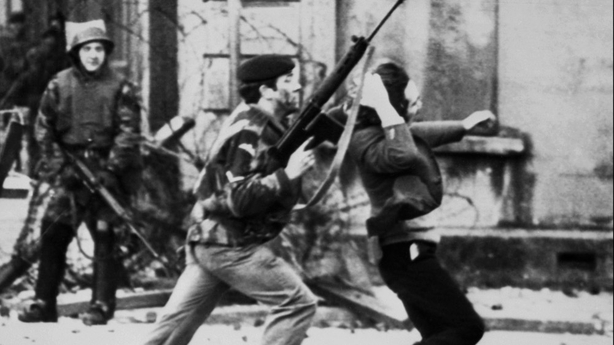
Soldiers of the 1st Parachute Regiment were ordered to arrest the rioters. Shots were fired into the crowd and in the minutes that followed, 13 men were dead and 13 other people were injured.
One of these, a 59-year-old man, died from his injures some months later.
The Saville Inquiry, which took 12 years to complete, reported in 2010. It established that the responsibility for what happened lay with the army.
British Prime Minster David Cameron called the killings "unjustified and unjustifiable".
Striking at the heart of the British establishment
The assassination of one of Margaret Thatcher’s closest aides was to colour her attitude towards Northern Ireland for the rest of her political career.
On 30 March 1979, NI Shadow Secretary Airey Neave was murdered by the INLA.
He died when a booby-trap bomb was detonated as he drove his car from a car park beneath the House of Commons.
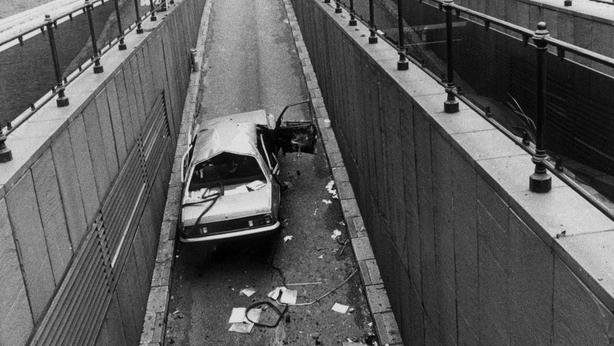
Neave was expected to be named as NI Secretary in the event of a Conservative victory in that year’s British general election and it was known he favoured a freer hand for the British army, greater use of the SAS and longer prison sentences for paramilitaries.
The INLA said he was targeted because he was a militarist.
That same year the IRA also struck at the very heart of the British establishment in two attacks that left 23 people dead in one day.
On 27 August, Lord Louis Mountbatten, a cousin of Queen Elizabeth, his 14-year-old grandson and Lady Doreen Brabourne were killed in an explosion on Mountbatten’s boat in Mullaghmore, Co Sligo.
Also killed was Paul Maxwell, 15, from Enniskillen who was working as a boatboy.
Hours later, 18 British soldiers and one civilian died when the IRA detonated two 800lb bombs targeting an army convoy as it passed through Narrow Water, Warrenpoint.
The civilian, Michael Hudson, was shot by British soldiers during a gun battle with the IRA during the attack.
The killings sparked a major crisis in Anglo-Irish politics and throughout the 1970s, 1980s and early-1990s – mass killings dominated the headlines.
1971 McGurk’s Bar – 15 people killed by the UVF
1974 Dublin and Monaghan bombings - 33 civilians killed and around 300 injured - it was the highest number of casualties in any one day of The Troubles
1975 Miami Showband Massacre – Three band members shot dead by the UVF
1976 Kingsmill Massacres – Ten protestant construction workers were taken off a bus and shot dead by the IRA – the Catholic driver was spared
1978 La Mon House Hotel – 12 people killed in a bomb attack by the IRA
1982 Droppin Well, Ballykelly – 11 soldiers and six civilians killed by an INLA bomb at a disco
1987 Enniskillen - An IRA bomb killed 11 people and left 63 injured. A 12th person spent 13 years in a coma before he died 1993- Shankill Road – Nine dead, including IRA member Thomas Begley, when a bomb meant to target loyalists meeting above a butcher’s shop exploded prematurely
1993 Greysteel – Eight people killed by the UFF in revenge for the Shankhill Road bombing
1994 Loughlinisland – Six Catholics killed by the UVF
1998 Omagh – 29 people and unborn twins killed by a car bomb planted by the Real IRA.
Hunger Strikes
Ten IRA and INLA men died on hunger strike in the Maze prison – with their deaths the culmination of a series of protests by paramilitary prisoners who demanded to be treated differently than ordinary 'criminal' prisoners.
In 1973, then secretary of state for NI William Whitelaw had granted 'special category status' to paramilitary prisoners, which was rescinded in 1976 by his successor Merlyn Rees.
'Special category' prisoners were allowed wear their own clothes and were kept apart from the ordinary prison population, but now they were to be housed in new cells blocks – H Blocks – were required to wear prison clothes and carry out prison work etc.
From 1976, Republican prisoners refused to wear prison clothes and the 'blanket protest' began, which later escalated to a 'no wash' or 'dirty protest'.
In the meantime the IRA launched an offensive against prison officers – 19 were to die between 1976 and 1980.
The first hunger strike began in October 1980 despite opposition by IRA leadership. Margaret Thatcher was firmly opposed to granting any concessions and the strike ended in December amid confusion over whether limited concessions had been granted.
When it became apparent that this had not happened Bobby Sands went on hunger strike on 1 March 1981 – this strike was to be a phased operation with men joining the strike at set intervals.
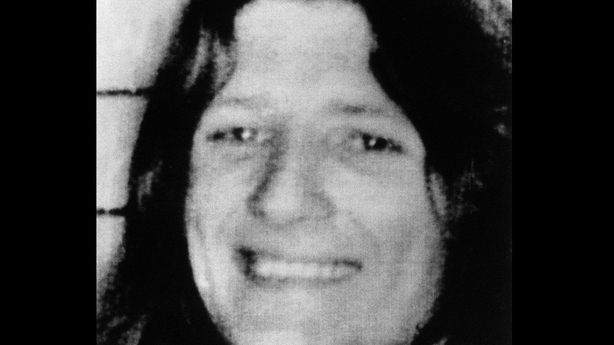
Sands was nominated to run in a by-election for Fermanagh-South Tyrone and won, becoming an elected MP. This was a significant development because it showed the IRA’s political wing – Sinn Féin – that it could wield political power.
Bobby Sands died on 5 May and while his death was met with indifference in Britain, there was a huge outpouring of grief in Northern Ireland with around 10,000 people attending his funeral.
Michael Devine was the last striker to die. After his death on 20 August, the families of the other men stepped in and agreed to medical intervention. The hunger strike formally ended on 3 October.
Mrs Thatcher was resolute in her refusal to concede and the prisoners saw the strike as a failure. However, Sinn Féin was encouraged by its growing electoral status and its twin pronged "ballot box and armalite" approach shaped its future political aspirations.
Targeting Britain
Republican paramilitaries brought their campaign to Britain on a number of occasions, hitting civilian and military targets alike.
Their intention was to bring to the attention of the British people the "continuing occupation of our country", but the indiscriminate nature of the attacks and the civilian toll did little to help Anglo-Irish relations.
On 5 October 1974, the IRA planted bombs at two pubs in Guildford in southwest London, known to be frequented by British army personnel.
Four soldiers and a civilian were killed in the bomb at the Horse and Groom when it went off at 8.30pm.
There were no casualties at the site of the second bomb, the Seven Stars, as it had been successfully evacuated.
A bomb, similar to those used at Guildford, was thrown through into the Kings Arms pub in Woolwich on 7 November, killing a soldier and a civilian.
The Guildford Four – Gerry Conlon, Paul Hill, Patrick Armstrong and Carole Richardson – were arrested under the Prevention of Terrorism Act and spent 15 years in prison before their convictions were quashed by the Court of Appeal.
On 21 November 1974 bombs went off in two pubs in Birmingham that left 21 people dead and 182 injured.
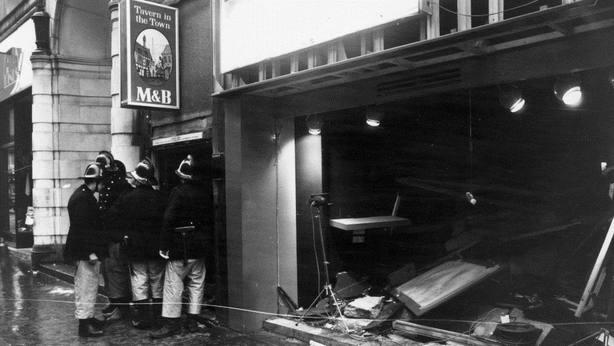
Warnings were given but the Mulberry Bush and the nearby Tavern in the Town were not evacuated in time.
The IRA was blamed for the attacks but denied responsibility.
Six men from Northern Ireland were convicted of the attacks in 1975, but later freed in 1991 by the Court of Appeal after their convictions were ruled unsafe.
In July 1982, 11 soldiers and seven horses were killed in two IRA bombs in London.
In Hyde Park, a troop of soldiers from the Royal & Blues was making its way back to barracks when a bomb planted in the boot of a car exploded as they rode by.
The scenes of carnage with men and horses lying on the ground were broadcast around the world. Four soldiers and seven horses died in the blast.
In Regent’s Park, two bombs were planted beneath a bandstand as an army band was playing – killing seven bandsmen in the blast.
A briefcase full of nails was found nearby and police believed it was meant to have been placed alongside the bombs but was too big to fit beneath the bandstand. If it had been there, police believed it would have decimated the audience.
The Brighton Hotel bombing on 12 October 1984 was meant to target then prime minister Margaret Thatcher and her cabinet who were at the hotel for a Conservative Party Conference.
Five people, including two high-profile Conservatives, were killed and 31 were injured. Mrs Thatcher escaped unhurt.
The attack nearly led to the collapse of secret Northern Ireland peace talks
In the aftermath of the bombing, Mrs Thatcher tried to cool negotiations on Northern Ireland saying she believed the bomb might be the beginning of a series of attacks.
She was also concerned about appearing as if Britain had been bombed into making concessions.
In 1993, two young boys – three-year-old Johnathan Ball and 12-year-old Timothy Parry – died in an IRA bomb attack on a shopping centre in Warrington on 20 March.
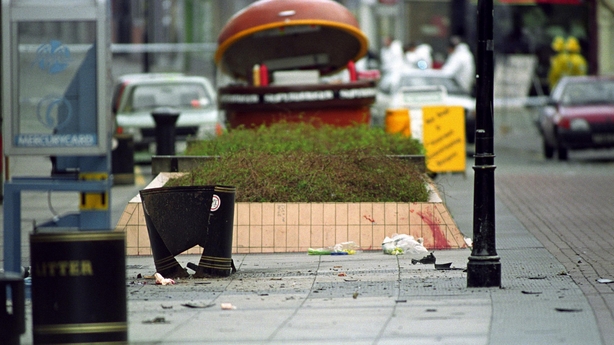
In an attempt to justify the attack the IRA tried to shift the blame on to police, whom they claimed deliberately failed to act on precise and adequate warnings. At the same time the provisionals expressed "profound regret".
There was widespread condemnation and revulsion at the attack. Dublin mother Susan McHugh organised a peace march, which was to lead to the Peace ’93 Initiative. Campaigner Gordon Wilson, who lost his daughter Marie in the Enniskillen bombing, also offered to meet IRA leadership to convince them to end their campaign.
Attacks on Britain ceased and the IRA announced a ceasefire the following year. But it was to be short-lived and the bombing of Canary Wharf in February 1996 signalled its end.
Two people died in the attack which showed once again the IRA's ability to strike at will at the heart of Britain’s commercial and political centres, with the damage estimated at over £100 million.
The Road to Peace
The beginning of the peace process is generally traced to the Anglo-Irish Agreement, which was signed in 1985, by Margaret Thatcher and Garret FitzGerald – although secret talks had been ongoing between various vested interests well before this.

The Agreement established a joint ministerial conference of British and Irish ministers that would meet regularly to discuss a range of matters pertaining to Northern Ireland – and it acknowledged Dublin’s right to be consulted on the North’s internal administration.
But crucially, Article 1 of the Agreement stated that there would be no change to Northern Ireland’s constitutional status without the consent of the majority – a move designed to reassure Unionists.
However, Sinn Féin denounced the agreement as they believed it marginalised them while at the same time bolstering the SDLP.
Unionists were also deeply unhappy and the Ulster Unionist Party severed its ties to the Conservative Party and agreed a pact with the Democratic Unionist Party which saw all 15 Unionist MPs resign their seats in Westminster.
In the meantime, both republican and loyalist paramilitaries stepped up their campaigns of violence.
Sinn Féin’s electoral showing improved in the post-Agreement years although they failed to consolidate it as IRA violence increased and atrocities such as Enniskillen further alienated them from the electorate.
However, the SDLP’s John Hume continued to initiate contact with the republican movement and there was a growing sense that a political solution was at least possible.
Pressure was also mounting on the republican movement to call a ceasefire and there were ongoing behind-the-scenes talks to achieve this – including contacts between Mr Hume and Sinn Féin’s Gerry Adams and talks between republicans and Irish government representatives, while Britain also had its own line of contact with republicans.
But the Shankhill Road bombing in 1993 and the subsequent tit-for-tat retaliation shootings threaten to derail the entire peace process.
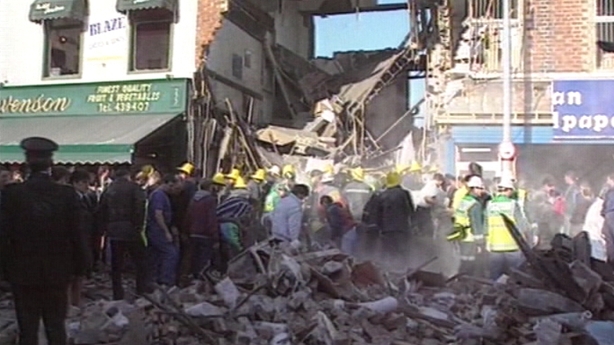
With the situation on a knife-edge, all sides re-engaged with renewed determination to keep it alive and the Downing Street Declaration was signed on 15 December 1993.
Building on the Anglo-Irish Agreement, the Declaration stated that it was "for the people of the island of Ireland alone, by agreement between the two governments respectively, to exercise their right to self-determination".
That year then President Mary Robinson met Queen Elizabeth at Buckingham Palace on 27 May.
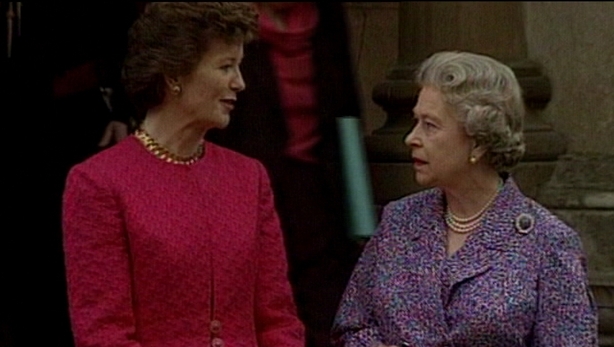
Although not an official State visit, it was the first official contact between an Irish president and a British monarch.
The IRA declared a ceasefire on 31 August 1994 with loyalists following suit in October.
The Canary Wharf bombing threatened the peace process once again but following renewed negotiations in July 1997 the IRA declared a "complete cessation" of military operations.
But the road to peace was still not complete and the issue of decommissioning was to dog the process for years, with the DUP refusing to participate in subsequent inter-party talks and David Trimble’s UUP only there reluctantly.
There was also conflict within the Republican movement with the Continuity IRA and the Real IRA refusing to put down their arms and violence increased throughout 1996-97.
With the peace process in a state of near paralysis by the beginning of 1998, then British prime minister Tony Blair and then Taoiseach Bertie Ahern along with David Trimble presented a "Heads of Agreement Paper" in January.
Intense negotiations followed with all sides making concessions and compromises that previously would have unpalatable – but the talks succeeded and on 10 April 1998 the Belfast Agreement (Good Friday Agreement) was reached.
It provided for amongst other things a devolved government and reforms of criminal justice and policing arrangements while controversially also providing for the early release of paramilitary prisoners.
The Agreement was endorsed in joint referenda on 22 May 1998.
On 11 November 1998 – eleven years after the Enniskillen bombing – then President Mary McAleese, Britain’s Queen Elizabeth along with King Albert II of Belgium jointly opened the Island of Ireland Peace Park in Messines, near Ypres in Flanders.
The war memorial to Irish soldiers killed and wounded during World War 1 is close to Messines Ridge where Irishmen, regardless of faith or political affiliation, fought side-by-side.
Croke Park and God Save the Queen
The playing of ‘God Save the Queen’ in Croke Park ahead of a Six Nations clash between England and Ireland was an unforgettable experience for the packed stadium and everyone watching.
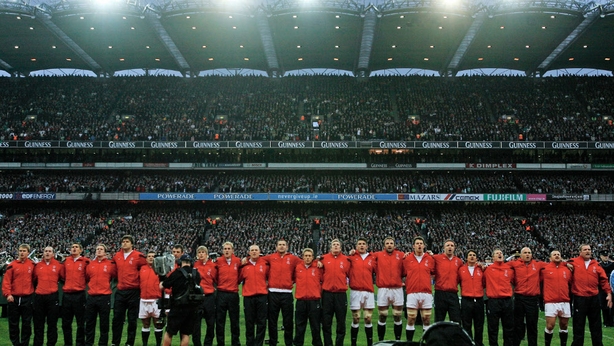
GAA headquarters was the site of Bloody Sunday on 21 November 1920 when 14 people were shot dead by British soldiers during a match between Tipperary and Dublin.
Tensions had been building for weeks in the run-up to the game with Republican Sinn Féin planning protests near the stadium and building contractors told to secure building sites and clean up debris – after rioters took advantage of building materials during the Love Ulster riots in Dublin city centre in 2009.
Indeed the gravity of playing this match and that anthem in Croke Park was felt so keenly that former Ireland international Conor O’Shea was brought in to explain the significance of Rule 42, Bloody Sunday and the Hogan Stand to the England camp.
On 24 February 2007, Croke Park would not only host a ‘foreign’ sport but the playing of the British anthem by the combined Army and Garda Number One bands was a moment fraught with tension and bound up with history.
It went without a hitch, as English supporters and players alike sang with passion and everyone else listened silently and respectfully until the end. Then it was applauded loudly by the entire stadium.
The rendition of Amhrán Na Fhiann that followed shook the rafters according to measured media accounts afterwards.
A critical moment in the history of the two nations had passed as sport and not politics or division won out on the day – Ireland’s 43-13 of England was almost an afterthought – almost.
Dissident Threat
In 2003 Martin McGuinness said dissident republicans would fail in their attempts to destroy the peace process – and while the process remains in place and the peace intact it has been sorely tested.
On 6 March 2009, the then PSNI then PSNI Chief Constable Sir Hugh Orde said the threat posed by dissident republicans was at its highest level since he was appointed in 2002.
The following day two British soldiers were dead and four others, including two civilians, were injured in a gun attack by the Real IRA on Masserene Barracks in Co Antrim.
Sappers Mark Quinsey and Patrick Azimbar were shot dead as pizzas from a local business were being delivered to the barracks at around 10pm.
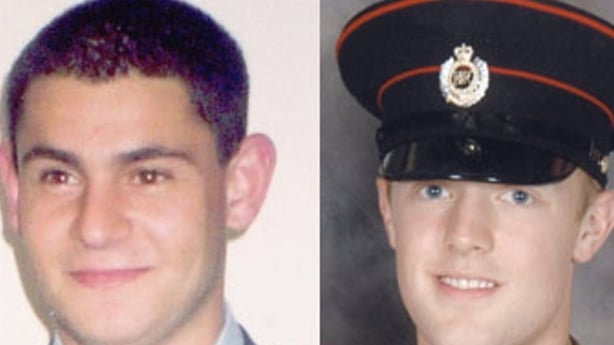
Following the attack the Irish and British governments affirmed their commitment that the will of the people would be upheld in Northern Ireland.
The killings came 12 years after the last British soldier was killed in Northern Ireland.
Lance Bombadier Stephen Restorick was shot in the back while manning a British Army patrol in Beesbrook, Co Armagh.
Two days after the Masserene attack Constable Stephen Carroll was shot dead by the Continuity IRA in Craigavon, Co Armagh.
Constable Carroll, 48, from Banbridge, Co Down, was the first policeman killed by republican paramilitaries since the peace process reforms that saw the RUC replaced by the PSNI.
In 2012, Brendan McConville and John Paul Wooton were found guilty of his murder
Ronan Kerr, a 25-year-old Catholic police officer died on 2 April 2011 when a booby-trap bomb exploded under his car in Omagh, Co Tyrone in an attack blamed by dissidents.
Northern Ireland Deputy First Minister Martin McGuinness said those who murdered the Police Constable were the "enemies of peace".
The following year prison officer David Black died after his car was ambushed on the M1 in Co Armagh was he was driving to work at Maghaberry Prison on 1 November.
A group calling itself "the IRA" later claimed responsibility for the killing.
He was the first prison officer murdered by paramilitaries for more than 20 years in Northern Ireland.
Building Bridges – Consolidating Relations
On 17 May 2011, Britain’s Queen Elizabeth and her husband the Duke of Edinburgh began a four-day State visit to Ireland.
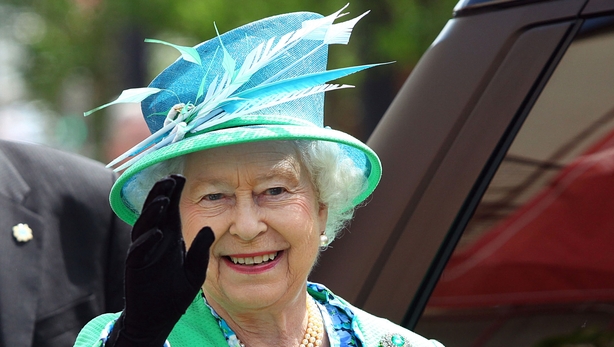
What had for a long time seemed impossibility was now a reality and the visit – the first by a British monarch to the Republic – was hailed as “an extraordinary moment by then president Mary McAleese.
The visit was about reconciliation and moving forward, with many of the events designed to pay respect to the State and reflect on the nature of the past and future relationships between the two countries.
The visit was not without its detractors and an unprecedented security operation was put in place.
Former President Mary Robinson said at the time: "It would be good if she could meet larger numbers of people during her visit but security has to be taken seriously and there were sufficient indications that there might be a problem", she said.
But the four days passed without a hitch and the Queen’s respectful and tactful appreciation of Ireland’s past relationship with Britain was both welcomed and commended.
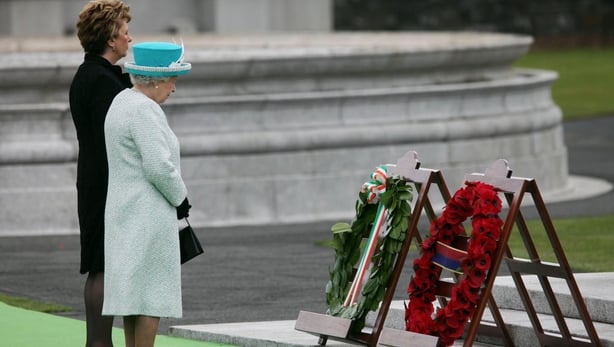
Although there was little opportunity for the royal couple to meet the Irish public, when they did they were met warmly and with good humour.
Indeed one of the more relaxed moments in the tightly organised visit was the Queen’s obvious delight at chatting to fishmonger Pat O’Connell at his stall during her visit to the English Market in Cork.
In her speech to a packed banquet hall at Dublin Castle on the second night of the visit, Mrs McAleese was heard to utter "wow" three times in response to Queen’s address, symbolising just how important the words were.
Now President Higgins will become the first Irish President to make a State visit the UK - marking another milestone in relations between the countries and between Northern Ireland and the Republic.
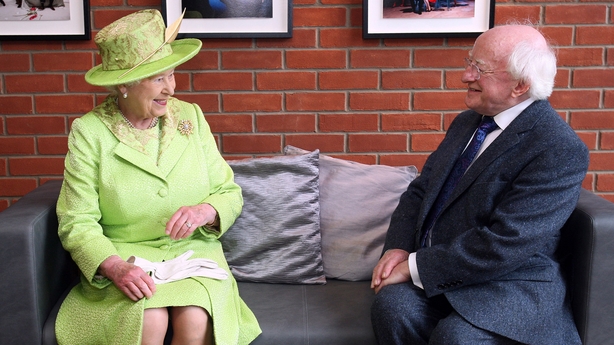
Taoiseach Enda Kenny said the visit is about building relations and while of enormous symbolic importance it brings "the relationship between the two countries and the two peoples to an unprecedented level".
On the decision of Deputy First Minister Martin McGuinness to attend the state banquet at Windsor Castle during the President’s visit, Mr Kenny said: "he’s an elected member of the executive service...we’ve got to move on and not be blocked from the past".

